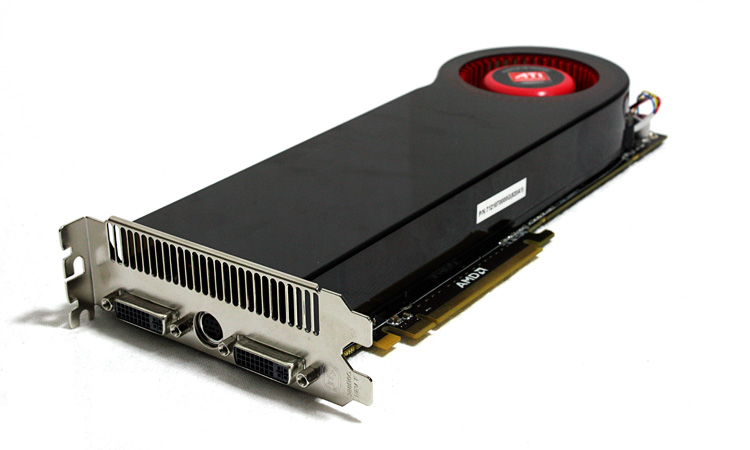2 - First base with R700
RV770 + RV770 = R700
Alright then grab some coffee and let's get started. Roughly half way through August AMD will release the 4800 series X2 products officially. What you see today is nothing final. Board-partners are free in their choices, you'll see X2 based cards with 4850 configurations, 4870 configurations, gDDR3, gDDR5, 1 GB, 2GB maybe even 4 GB memory. So that is why I want to mark this article very clearly and specifically as a preview. We'll show some early rough numbers based on this two-GPU configuration based product. But to understand the Radeon 48x0 X2 graphics card, you must learn a little more about the GPUs that are empowering the product; which you already know under the name Radeon HD 4850/4870, yet was developed under codename RV770.
Going first base with RV770
By launching the RV770 chip, AMD effective doubled up performance over the last-gen product especially for you at a very acceptable price level. Quite an achievement. But let's talk a little about the GPU and the differences between the two models that where released (4850/4870), the RV770 based chipset. AMD put nearly a billion transistors into that GPU, which is now built upon a 55-nm production.
The chip literally is 16 mm wide and high. Which for AMD still is quite large, for a 55nm product. The number of transistors for a midrange product like this is extreme and typically it's best to directly relate that to the number of shader processors to get a better understanding. But first let's look at some nice examples of Die sizes of current architectures.
 One of the two RV770 cores utilized on the R700 product.
One of the two RV770 cores utilized on the R700 product.
Now please understand that ATI uses a different architecture shader processors opposed to NVIDIA, so do not compare the numbers that way; or in that manner. The Radeon 4850/4870 have 800 scalar sub-processors (320 on the HD 3800 series) and now have a significant forty texture units (was 16 in last-gen architecture).
The stream/compute/shader processors (can we please just name them all shader processors?) definitely had a good number of changes; if you are into this geek talk, you'll spot 10 SIMD clusters each carrying 80 32-bit Shader processors (this accumulates to 800 ). If I remember correctly, one SIMD unit can handle double precision.
Much like we recently noticed in NVIDIA's GTX 200 architecture, the 80 scalar stream processors per unit per SIMD unit have 16KB of local data cache/buffer that is shared among the shader processors. Next to the hefty shader processor increase you probably already noticed the massive amount of texture units. In the last generation product we noticed 16 units, the 4800 series has 40 units.
When you do some quick maths, that's 2.5x the number of shader processors over the last-gen product, and 2.5x the number of texture units. That's ... a pretty grand change folks. Since the GPU has 800 shader processors it can produce the raw power of 1000 to 1200 GFlops in simple precision. It's a bit lame and inaccurate to do but ... divide the number of ATI's scalar shader processors with the number 5 and you'll roughly equal the performance to NVIDIA's stream processor, you could (in an abstract way) say that the 4800 series have 160 Shader units, if that helps you compare it towards NVIDIA's scaling. Again there's nothing scientific or objective about that explanation.
The number of transistors for a product priced like this is quite excessive and typically it's best to directly relate that to the number of shader processors to get a better understanding. Now please understand that ATI used different shader processors opposed to NVIDIA, so do not compare the two in that manner; but the new Radeon 4850/4870 have 800 shader cores. Effectively this product can poop out 1000/1200 GigaFLOPs of performance. Depending on how that is measured of course.
An 4870 X2 (R700) has two 4870 cores (RV770) embedded onto the PCB.

